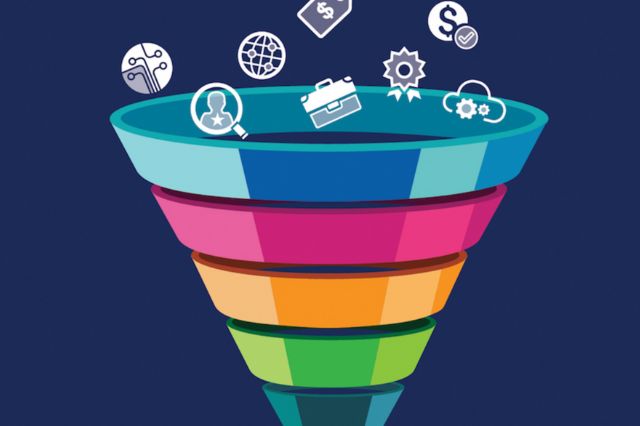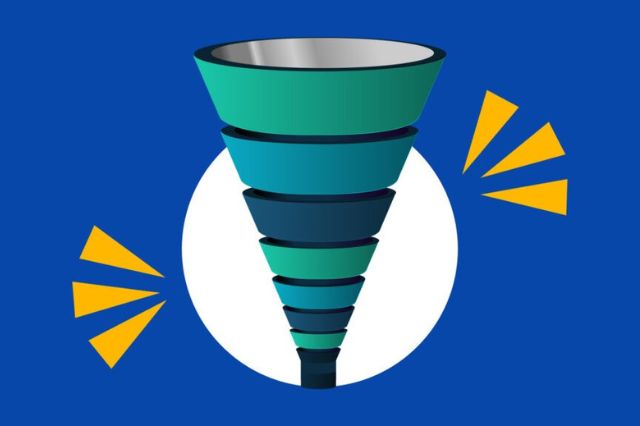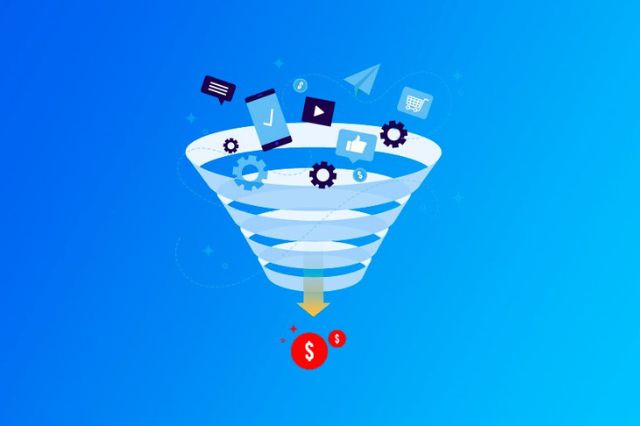Follow These 10 Tips on How to Build a Sales Funnel

Building an effective sales funnel is crucial for businesses aiming to maximize their conversion rates and drive sales.
A well-constructed sales funnel not only helps in identifying potential leads but also guides them through the journey from awareness to purchase.
Implementing successful strategies within the funnel can significantly enhance its effectiveness, ensuring that prospects move smoothly from one stage to the next, ultimately leading to increased revenue.
Before we dive into the tips on how to create a successful one, let’s first explain what it is and define each of its stages consumers go through.
General Definition

A sales funnel is a strategic marketing concept that maps out the journey a consumer takes from becoming aware of a product or service to making a purchase decision. This metaphorical funnel illustrates the gradual narrowing of the consumer base as potential buyers move through different stages, from initial awareness to the final action of purchasing.
The funnel provides marketers and sales teams with a structured approach to understanding consumer behavior and optimizing sales strategies at each stage to effectively convert leads into customers. Follow this link for more https://www.marketingprofs.com/
Stages of the Sales Funnel
The sales funnel is traditionally divided into several stages, each representing a step in the consumer’s journey towards making a purchase.
These stages can vary slightly depending on the model, but they generally include Awareness, Interest, Decision, and Action. Understanding these stages is crucial for developing targeted marketing strategies that guide consumers through the funnel.
Awareness
The Awareness stage marks the beginning of the consumer’s journey. At this point, potential customers become aware of a problem they have or a need that requires fulfilling. They also become aware of your product or service as a possible solution to their problem.
This stage is crucial for attracting a broad audience through marketing efforts such as content marketing, social media campaigns, SEO, and paid advertising. The goal is to grab the attention of as many people as possible who might have an interest in what you offer.
Interest
Once consumers are aware of your brand, they move into the Interest stage, where they start to learn more about your product or service. In this phase, potential customers are considering various solutions to their problem, including your offering and those of your competitors.
They’re not yet ready to make a purchase but are gathering information. Content that provides value, such as blogs, e-books, webinars, and detailed product information, can be particularly effective at this stage. Email marketing campaigns that nurture leads by providing targeted information can also help keep your brand at the forefront of consumers’ minds.
Decision
In the Decision stage, consumers are ready to make a choice. They have evaluated the options, and your product or service is on their shortlist. This is where detailed product information, testimonials, reviews, and comparison guides can influence their decision. Offering free trials, demos, discounts, or bonuses can also be effective tactics to sway their decision in your favor.
Action
The Action stage is where the consumer makes a purchase decision and completes the transaction. However, the journey doesn’t necessarily end here. The goal is to turn one-time buyers into repeat customers and brand advocates.
Post-purchase follow-up, excellent customer service, loyalty programs, and requests for feedback or reviews can enhance customer satisfaction and encourage repeat business. Additionally, analyzing data from completed sales can provide insights into optimizing the funnel for future customers.
Optimizing the Sales Funnel

Each stage of the sales funnel requires a tailored approach to move consumers closer to making a purchase. By understanding the needs and behaviors of consumers at each stage, marketers can create targeted strategies that address those specific requirements.
This might involve using different channels and types of content, from educational articles and social media posts in the Awareness stage to personalized emails and special offers in the Decision phase.
Now that we’ve covered that, here are ten successful tips on how to build an effective sales funnel.
Understand Your Audience

The first step you need to take if you want to build a funnel is to gain a deep understanding of your target audience. This involves researching their needs, interests, pain points, and behavior patterns.
Understanding your audience allows you to tailor your messaging and offers to meet their specific needs, making your funnel more relevant and appealing. Conduct surveys, analyze customer data, and engage in social listening to gather insights about your audience.
Create Compelling Content
An efficient sales funnel relies on content. It draws in potential customers, informs them about your company’s products and services, and ultimately motivates them to make a purchase. Make content that your target audience will find useful, captivating, and related to their interests.
To appeal to a wider audience, try including media types like e-books, videos, infographics, blog articles, etc. Make sure your content positions your company as the answer to your audience’s typical problems and concerns.
Leverage Multiple Traffic Sources
To fill your sales funnel with qualified leads, leverage multiple traffic sources. Utilize search engine optimization (SEO) to attract organic traffic, engage in social media marketing to reach audiences on platforms they frequent, and consider paid advertising for targeted outreach.
Diversifying your traffic sources ensures a steady flow of prospects into your funnel and reduces the risk of reliance on a single source.
Optimize for Conversion
Conversion optimization is key to an effective sales funnel. This involves designing landing pages that convert, crafting compelling calls-to-action (CTAs), and simplifying the checkout process. Use clear, benefit-driven headlines, persuasive copy, and high-quality visuals to encourage conversions.
A/B testing different elements of your funnel, such as headlines, CTAs, and images, can help identify what works best in driving conversions.
Nurture Leads with Email Marketing
Email marketing is an essential tool for nurturing leads through the sales funnel. Once prospects enter your funnel, engage them with personalized email campaigns that provide value and nurture their interest in your offering.
Segment your email list based on behavior and preferences to deliver targeted messages that resonate with different groups. Regularly provide useful content, special offers, and updates to keep your brand top of mind.
Use Lead Magnets to Attract Subscribers
Lead magnets are valuable resources offered in exchange for contact information. They are effective tools for attracting prospects into your sales funnel. Create lead magnets that are highly relevant and valuable to your target audience, such as free trials, e-books, webinars, or discount codes. Promote your lead magnets across your digital channels to maximize their reach and effectiveness.
Implement a CRM System
A Customer Relationship Management (CRM) system is crucial for managing and analyzing interactions with prospects throughout the sales funnel. A robust CRM system can help you track lead behavior, segment audiences, and personalize communication.
It provides insights into which stages of the funnel are performing well and where prospects are dropping off, allowing you to make data-driven adjustments to improve your funnel’s effectiveness.
Focus on Customer Retention
An effective sales funnel doesn’t end with a purchase; it includes strategies for retaining customers and encouraging repeat business. Implement post-purchase follow-ups, loyalty programs, and customer support initiatives to keep customers engaged and satisfied. Satisfied customers are more likely to become repeat buyers and brand advocates, contributing to the long-term success of your funnel.
Leverage Social Proof
Social proof, such as customer testimonials, reviews, and case studies, can significantly enhance the effectiveness of your sales funnel. Prospects are more likely to trust and buy from brands that are endorsed by others. Feature social proof prominently on your website, landing pages, and marketing materials to build credibility and trust with potential customers.
Continuously Analyze and Optimize
Finally, building an effective sales funnel is an ongoing process that requires continuous analysis and optimization. Regularly review your funnel’s performance, identify bottlenecks and areas for improvement, and test different strategies to enhance its effectiveness.
Use analytics tools to monitor key metrics such as conversion rates, bounce rates, and customer acquisition costs. Staying agile and responsive to data insights allows you to refine your funnel over time, ensuring its continued success.



